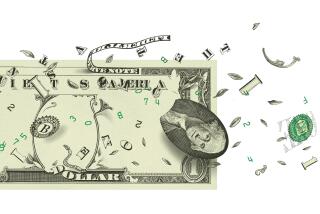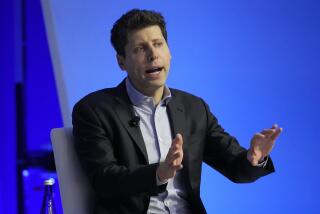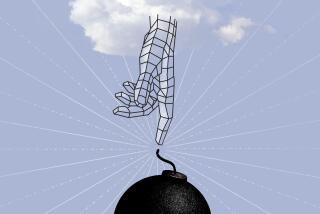And the Consumers Shall Lead Them
- Share via
For today’s baby boomers, confronting the triple-whammy prospect of looming college costs, parents in retirement homes and a workplace that keeps shifting, the future may look somewhat shaky.
So it would be surprising news to learn that they are in the catbird seat as consumers, with unprecedented clout that will continue to grow with the turn of the century.
That’s the scenario from one of the nation’s leading forecasters. Ian Morrison is president of the Institute for the Future, a nonprofit research and consulting group in Menlo Park, whose clients include more than a hundred Fortune 500 companies. “More and more, consumers are making the rules,” said Morrison, who specializes in helping corporations deal with change and strategize for the future.
In fact, the well-informed and demanding new breed of consumer is one of the major factors driving the changes that are rocking corporate America, said Morrison, who examines the subject in his new book, “The Second Curve: Managing the Velocity of Change” (Ballantine Books).
Looking out over the American landscape, Morrison sees a marketplace in chaos as businesses merge, downsize, upgrade, lay off, buy out and spin off. His analysis: Three forces--new consumers, new technologies and new geographical market frontiers--are changing our world, singly and in combination, at an unprecedented rate. What’s unusual, he emphasizes, is that all three factors have hit almost every industry in a forceful confluence. “I think we are in a unique time of structural change,” Morrison said.
Although he is a frequent guest speaker and commentator, and has written books and articles on future trends, his new book is different, he said. He sees it as a handbook offering “fog lights for the road ahead.”
Morrison wants to help business leaders stretch their thinking from short-term profits to long-range planning as they are challenged to move from their familiar, comfortable way of doing business (the “first curve”) to the fearful “second curve” world of new markets, customers and technologies. By “second curve,” he doesn’t mean a progression of eras, as in Alvin Toffler’s “Third Wave.” Instead, he sees the two curves as part of a whole, the “yin and yang” dynamic of any change process.
“It’s my sense that a lot of people, particularly in large organizations, are sitting there wondering where the growth is going to come from,” he said. “They’ve gone through two or three rounds of re-engineering, and they can see it’s not going to be in terms of head count.”
And he wants consumers to understand that the institutions they have relied on for goods and services are facing a very different future. “The responses they make will determine whether they will be around to serve you, on the one hand, or employ you, on the other,” he said.
“The good old days when businesses grew by hiring more people, and the typical American success story was to find a Fortune 500 company to take you on for life, are gone,” he said in a recent telephone interview. Morrison was winding up a typical week that had included an institute board meeting in New York and presentations in several cities to a range of specialized groups from venture capitalists to government postal services.
Having joined the Institute for the Future staff 10 years ago, the Scottish-born Morrison, 43, now finds that most of the predictions they were making about technology and marketplace globalization are suddenly realities.
Despite its name, the institute, founded in 1968, is not an exotic place (“Some people think we have the mother of all crystal balls tied up to some computer”) and doesn’t make predictions. Founded in 1968 by mathematicians who had developed the Delphi method of combining expert opinion to solve a difficult problem, the institute now has a staff of about 35.
With information from many sources--including government data, hundreds of publications and a partnership with the Louis Harris poll organization--they use cross-analysis to measure emerging trends.
It’s a good time to be in the future business, Morrison said. “We’ve seen a real upsurge in interest at the institute, partly because the year 2000 is no longer a speculative prospective but just a little more than three years away, and partly because most corporations have a high degree of uncertainty about what the future will bring them.”
Morrison’s prescription is the “first curve-second curve” model outlined in his book, a theory that he describes as “embarrassingly simple.” It’s a way of viewing the world that he uses every day just in reading the newspaper, he said.
A typical first curve story is the news that two giant companies will merge to “operate more efficiently” and cut 12,000 jobs. “Right next to that,” he said, “will be a story about an Internet start-up program that made some kids from Stanford billionaires overnight.” Pure second curve.
“I think the two curves are the dilemma in any age,” said Morrison, whose undergraduate major at Edinburgh University was the geographic and economic change in Scotland from 1580 to 1830. The tensions posed today, for individuals and corporations, is that they know change is inevitable but don’t know how fast it will come, he said. “You have to keep making money on the first curve, you can’t just walk away from it.”
*
One example of a company making the “second curve” jump successfully is Pitney Bowes. The company revolutionized the collection of postal revenues with the invention of the postage meter in the 1970s but could see that the business world was going toward faxing. It responded with a division that installs, manages and replaces fax machines. Pitney Bowes has not dumped postage meters--the second curve doesn’t mean the disappearance of things so much as an addition, Morrison said. “The health services field added MRIs but they still have X-rays.”
The U.S. Congress, on the other hand, is “strictly first curve,” he added. “Their conception of the American economy seems to be earnest farmers toiling in their little plots, or satanic mills turning out ball bearings. This is archaic--we are a nation of service workers. And the debate shows a complete lack of understanding of the global nature of our production process.”
A key factor driving businesses into the second curve is an increasingly sophisticated consumer, as the baby boomers transform the marketplace. Compared with their predecessors, these consumers are better informed, more affluent, very demanding, skeptical and not particularly loyal, Morrison said. They have high expectations in quality, service, design--and they want low cost.
And they are well-equipped with information technology for making purchasing decisions. Morrison focuses on the “informated” households that have at least five of the these technologies: VCR, CD, laser disc, fax machine, answering machine, a voice mail system, computer and cellular phone. The number has increased from 11% of households to 20% in just two years and is growing rapidly, he said.
“The overall good news is that the emerging markets are incredibly consumer-focused,” he said. “The affluent shopper should ask for and get unbelievable levels of service.”
That’s provided the shopper has survived the impact of the second curve, and Morrison is optimistic. Despite its scary prospects, he writes, the second curve is the place where “all of the growth--personal, professional and financial--will take place.”
More to Read
Sign up for our Book Club newsletter
Get the latest news, events and more from the Los Angeles Times Book Club, and help us get L.A. reading and talking.
You may occasionally receive promotional content from the Los Angeles Times.







